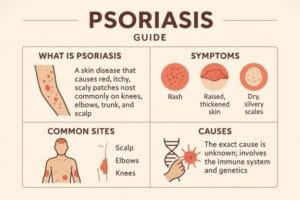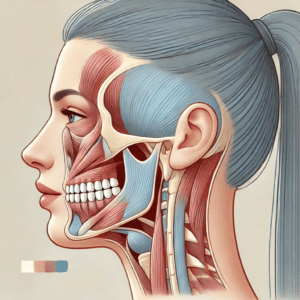Is Your Protein Powder a Secret Lead Delivery System? What You Need to Know!
Table of Contents
Is Your Protein Powder a Secret Lead Delivery System? What You Need to Know!
Your daily protein shake, something you might grab for quick energy or muscle recovery, has become a staple for many. I see folks everywhere, shaker in hand, fueling up. But here’s the kicker, something important we need to talk about regarding lead in protein powder. Recent tests, especially from Consumer Reports in October 2025, dropped some serious news: many popular protein powders harbor unwanted guests, specifically lead. This isn’t just a trace amount; some products carry levels way, way over what experts deem acceptable. For anyone relying on these supplements, it throws a wrench into the whole idea of what’s helping and what might be silently harming. We’re talking about substances that accumulate, creating a silent impact on health, often unnoticed until long-term effects manifest. My goal today is to lay out the facts, cut through the noise, and arm you with the information you need to make smart choices for your health and your protein powder selection.
The Lead Lowdown: What’s the Fuss About Lead in Protein Powder?
What exactly is lead doing in your protein shake? It’s not a secret ingredient added for flavor or function. The truth is, plants act like little sponges, absorbing heavy metals—including lead, cadmium, and arsenic—from the soil, the water they drink, and even the air around them. This absorption particularly holds true for plant-based ingredients often found in protein powders. When you dry and grind these plant materials to make powder, any absorbed contaminants become concentrated. It’s simply how the natural world operates, but with industrial pollution, those levels escalate.
Why should this matter to you? The answer is stark: no universally recognized “safe” amount of lead exists for human consumption. This isn’t a substance your body processes and eliminates quickly. Instead, lead accumulates over time, silently messing with critical systems in your body. We’re talking about the brain, the heart, the kidneys—all essential organs. Children and pregnant individuals are especially vulnerable, as even low levels can impair neurological development, impacting IQ and behavior. For adults, chronic lead exposure can bring long-term health woes:
- Memory issues: Difficulty recalling information, problems with cognitive function.
- High blood pressure: A significant risk factor for cardiovascular disease.
- Kidney damage: Impaired function, potentially leading to chronic kidney disease.
- Fertility problems: Reduced sperm count and abnormal sperm in men, miscarriage risks for pregnant individuals.
- Mood disorders: Increased irritability, depression, anxiety.
One individual I spoke with, a long-time fitness enthusiast, shared, “I used to just grab whatever protein was on sale. The idea that something I thought was helping my body could be slowly hurting it… it was a gut punch. It makes you rethink everything you put in your body.” This isn’t just theory; it’s tangible, a silent force operating against our well-being. Knowing how lead affects us, it becomes clear: vigilance isn’t just recommended, it’s necessary.
A Heavy Metal History: Contamination of Protein Powder Isn’t New
This isn’t some brand-new problem that just popped up. Concerns about heavy metals in protein powders actually started gaining traction over a decade ago. Way back in 2010, Consumer Reports first flagged heavy metals in protein powders. They tested 15 products and found detectable concentrations of at least one heavy metal in every single one. That was a wake-up call, but apparently, not a loud enough one for everyone.
Fast forward to their latest investigation, published in October 2025, and the shocking truth emerges: things have actually gotten *worse*. The average lead levels found in protein powders are higher now than they were 15 years ago. Even more concerning, fewer products are coming up squeaky clean with undetectable amounts of lead. We see this with other contaminants too, but lead, specifically, seems to be a persistent and intensifying issue.
This pattern suggests that despite early warnings, the industry as a whole hasn’t adequately addressed the root causes of contamination or implemented sufficiently stringent controls. It means that as consumers, our skepticism needs to be dialed up. If a problem was bad then and it’s worse now, what does that tell us about the systems in place? It’s a clear signal that the responsibility for due diligence often falls squarely on our shoulders.
Protein Powder’s Shady Suspects: Plant-Based, Chocolate, and Organic Lead
So, who are the biggest culprits when we talk about lead in protein powder? My take on this is clear from the data: look closely at what you’re buying.
The spotlight shines brightest on plant-based protein powders, especially those formulated with pea protein. These products can contain up to nine times more lead than their dairy-based counterparts. Why? Because plants, as we’ve discussed, absorb elements from the soil. If that soil is contaminated, the plants become a conduit. Peas, rice, and hemp, common in these blends, are particularly adept at soaking up heavy metals. It’s not an indictment of plant-based eating, but a flag for ingredient sourcing.
Chocolate lovers, lean in here: your favorite flavor comes with a higher risk. Cocoa, the base for all things chocolate, naturally contains heavy metals. This makes your chocolate-flavored protein shake a statistically higher risk for lead and cadmium contamination. One study even found chocolate protein powders contained four times more lead and a staggering 110 times more cadmium than vanilla-flavored options. It’s a hard pill to swallow if you’re like me and enjoy a good chocolate kick, but facts are facts.
Now, for the surprise twist, and it’s a significant one: “organic” doesn’t automatically mean “cleaner” when it comes to heavy metals. In some cases, organic plant-based powders actually tested *higher* for lead and cadmium than their non-organic counterparts. This isn’t a knock on organic farming principles, but rather a reminder that heavy metals exist naturally in the earth. If a plant grows in soil with higher natural lead content, even if organic, that lead will still be absorbed. The label might promise no pesticides, but it can’t magically filter out what the earth itself provides. This changes the game, doesn’t it? What we thought was a safe bet isn’t always so.
Who’s Watching Protein Powders? The Regulatory Wild West for Lead
Here’s the frustrating part, and trust me, I get why it’s infuriating: the FDA isn’t giving protein powders a pre-market stamp of approval. Unlike medicines, which undergo rigorous testing before they hit the shelves, dietary supplements largely regulate themselves. There are simply no specific federal limits for lead in protein powder or other heavy metals in your tub of protein. It’s a regulatory gray area, a wild west, where manufacturers largely determine what’s “safe” for their own products.
The debate around what constitutes a “safe” amount of lead gets even murkier. Consumer Reports relies on California’s super-strict Proposition 65 limits, setting a daily level of concern at 0.5 micrograms. That’s a tiny amount, designed to minimize lifetime risk. The FDA, however, has more lenient “interim reference levels”: 2.2 micrograms per day for children and 8.8 micrograms per day for women of childbearing age, and 12.5 micrograms per day for adults generally. These are guidelines, not enforceable requirements. This discrepancy creates a confusing landscape for everyone trying to make informed decisions. It leaves a massive gap in consumer protection, forcing individuals to become their own watchdogs.
What about the industry’s response to this? It’s a mixed bag. Some companies, like Huel and Naked Nutrition, whose products were flagged for exceptionally high lead levels by Consumer Reports (Naked Nutrition’s Vegan Mass Gainer had lead levels 1,572% higher than CR’s daily level of concern, and Huel Black Edition contained levels 1,288% higher), say their products are totally fine by international or FDA standards. They argue that trace amounts of lead occur naturally, and their products meet these broader, less stringent benchmarks. Others are taking proactive steps, changing sourcing and formulations, recognizing that consumer trust is on the line. But without a clear federal mandate, widespread, consistent change remains a slow grind. The bottom line? Don’t assume someone else is looking out for you at every turn.
Your Action Plan: Shaking Up Your Routine for Protein Powder Safety
Alright, so you’ve got the facts on lead in protein powder. Now, what’s your move? Don’t panic, but absolutely get smart. My first piece of advice is fundamental: for most adults, protein powder isn’t a daily necessity. Your body thrives on nutrients from whole foods.
Prioritize whole foods first. I always tell people to focus on real food sources for protein: lean meats, eggs, dairy, legumes, nuts, seeds. These give you a wider spectrum of nutrients and often come with fewer question marks. Supplements are meant to *supplement*, not replace.
If you *do* decide protein powders are a part of your routine, here’s how to stack the odds in your favor:
- Look for Third-Party Certifications: This is non-negotiable. Certifications like NSF Certified for Sport, USP (U.S. Pharmacopeia), or Clean Label Project mean an independent organization has tested the product for contaminants, including heavy metals, and verified its contents. It’s an extra layer of protection, something I always recommend. “After learning about the lead, I started looking for those little certification logos,” one customer told me. “It adds a level of trust that simply wasn’t there before.”
- Consider Whey or Collagen-Based Protein: These options generally contain lower levels of lead and cadmium than many plant-based varieties.
- Stick to Vanilla or Unflavored Options: Remember, chocolate-flavored powders can carry significantly more heavy metals due to cocoa. Keeping it simple often means keeping it cleaner.
- Avoid Daily Use of Higher-Risk Powders: If you insist on plant-based or chocolate powders, treat them as occasional supplements, not daily staples. Reducing frequency reduces exposure.
- Know the “No-Go” List: Consumer Reports specifically advised ditching Naked Nutrition’s Vegan Mass Gainer and Huel Black Edition due to their sky-high lead content. These are products where the risk significantly outweighs any perceived benefit.
- Naked Nutrition’s Vegan Mass Gainer contained lead levels 1,572% higher than Consumer Reports’ daily level of concern.
- Huel Black Edition contained lead levels 1,288% higher than that same concern level.
- Seek Better Choices: Some brands did fare better in testing. Muscle Tech’s 100% Mass Gainer, for instance, had no detectable lead in one study. Other options considered among the better choices include:
- Optimum Nutrition’s Gold Standard 100% Whey
- Transparent Labs’ Mass Gainer
- Owyn Pro Elite High Protein Shake
- BSN Syntha-6 Protein Powder
- Momentous Whey Protein Isolate
- Dymatize Super Mass Gainer
My point is this: there are options. You just need to be more deliberate about your choices. It might mean spending a little more time researching, or perhaps re-evaluating if a daily shake is truly essential for your goals.
The Future Scoop: What’s Next for Protein Powders and Lead Limits?
The pressure is on, I can tell you that much. Consumer advocacy groups, fueled by reports like the one from Consumer Reports, are relentlessly pushing the FDA to finally set some real, enforceable limits on heavy metals in supplements. This isn’t just a suggestion; it’s a demand for action in a market that has long been self-regulated. Imagine a world where all protein supplements undergo mandatory, rigorous testing, and the results are transparently displayed. That’s the goal.
I anticipate we’ll see more brands stepping up their game. They’ll have to. The market rewards transparency and safety, and public trust, once lost, is brutal to regain. This means more rigorous testing, clear labeling, and possibly even the public sharing of Certificates of Analysis (CoAs) for each batch. Some companies are already moving in this direction, trying to get ahead of potential regulations and consumer backlash.
There’s even talk of age restrictions for some protein products on the horizon. States like New York have already enacted laws restricting the sale of certain supplements to minors, a trend that could spread nationally. This indicates a growing recognition that not all supplements are benign, particularly for younger, developing bodies.
On a different but related note, science continues to move forward. While avoiding exposure to heavy metals like lead is always the best strategy, research is increasingly looking into how certain compounds might aid the body in detoxification if exposure occurs. For instance:
- Peptides: These small protein units show promise in binding to heavy metal ions, reducing their toxicity, and helping the body excrete them.
- Glutathione: Often called the “master detoxifier,” glutathione binds to heavy metals like lead, mercury, and cadmium, transforming them into less harmful compounds for excretion.
- Whey Protein: Interestingly, whey protein can help boost the body’s natural glutathione levels, thanks to its rich content of sulfur-containing amino acids. This doesn’t mean whey protein is a magical antidote to lead contamination, but it highlights the body’s intricate defense mechanisms.
The future for lead in protein powder is one where the consumer holds more power, demanding accountability and transparency. It’s a market correction coming, driven by knowledge and a desire for genuine health.
FAQ: Lead in Protein Powder
Q1: Why is lead found in protein powder?
A1: Lead naturally occurs in soil and water. Plants, especially those used in plant-based protein powders, absorb these heavy metals during growth. The process of drying and grinding these plants can then concentrate any absorbed lead in the final powder.
Q2: Are all protein powders affected by lead contamination?
A2: No, not all protein powders contain high levels of lead. However, recent investigations, like those from Consumer Reports in October 2025, indicate that over two-thirds of tested products had lead levels exceeding what experts consider safe for daily consumption. Plant-based and chocolate-flavored protein powders often show higher levels.
Q3: What are the health risks associated with lead in protein powder?
A3: There is no known safe level of lead exposure. Even low levels can accumulate over time, potentially causing long-term health problems. Risks include impaired brain function, high blood pressure, kidney damage, fertility issues, and mood disorders. Children and pregnant individuals are particularly vulnerable.
Q4: Does the FDA regulate lead levels in protein powder?
A4: The FDA does not currently have specific, enforceable federal limits for lead in protein powders or other dietary supplements. They rely on manufacturers for safety and quality control. Consumer advocacy groups are pushing for stricter regulations.
Q5: How can I choose a protein powder with less lead?
A5: I recommend looking for products with third-party certifications (like NSF Certified for Sport, USP, or Clean Label Project). Consider whey or collagen-based protein over plant-based, and choose vanilla or unflavored options. Limit daily use, especially for plant-based or chocolate varieties.
Q6: What specific protein powders should I avoid due to lead content?
A6: Consumer Reports advised avoiding Naked Nutrition’s Vegan Mass Gainer and Huel Black Edition due to their exceptionally high lead levels. Others like Garden of Life Sport Organic Plant-Based Protein and Momentous 100% Plant Protein were recommended for limited, occasional use.
Q7: Can I still get enough protein without relying on protein powder?
A7: Absolutely. Most adults can meet their protein needs through whole food sources such as lean meats, poultry, fish, eggs, dairy products, legumes, nuts, and seeds. Protein powders are supplements, not replacements for a balanced diet.
For more detailed information, you can visit the original report: Consumer Reports on Protein Drinks and Heavy Metals.














Post Comment